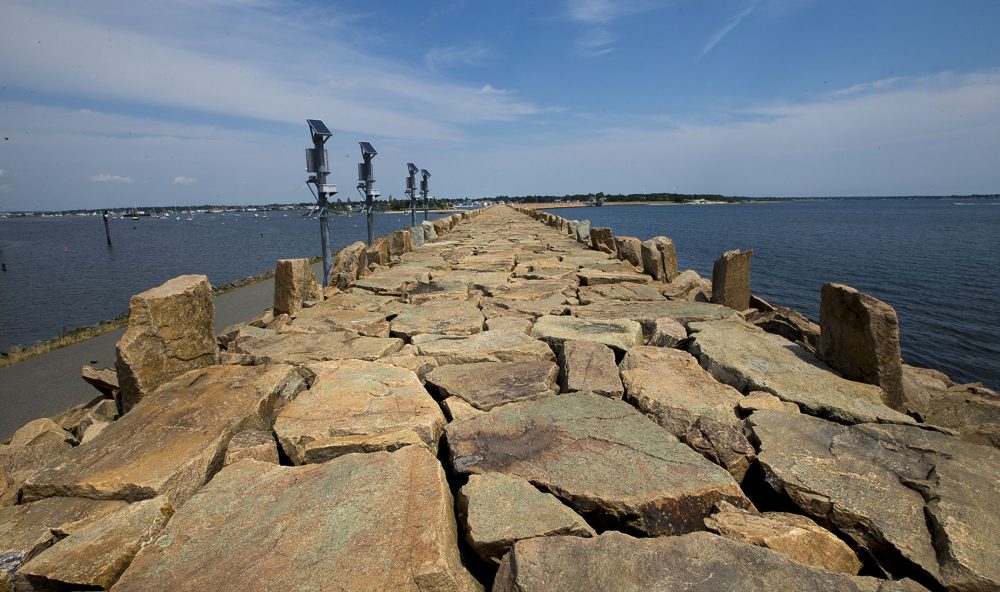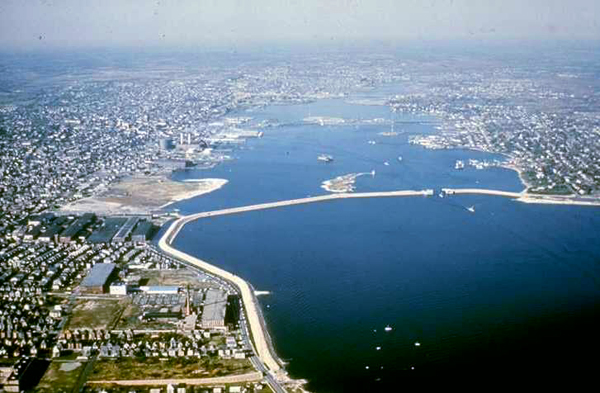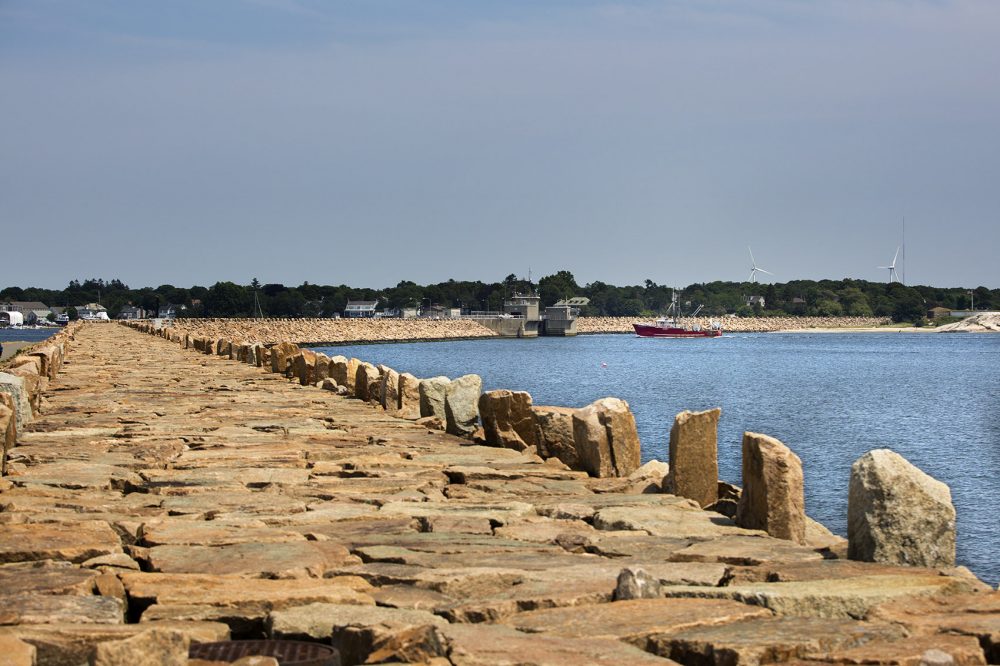Advertisement
CLIMATE CHANGE IN MASS.
New Bedford Hurricane Barrier: Not An 'Impermeable Line Of Defense' Against Climate Change

New Bedford's fishing port is No. 1 in the country in terms of revenue. It's the scallop capital of the world.
The city was a once a leader in the whaling industry. But even if you've been there, you might not know New Bedford is home to the longest hurricane barrier on the East Coast — an enormous feat of civil engineering. The barrier rises 20 feet above the surface of the water, totals 3.5 miles in length, and crosses New Bedford and Fairhaven harbors.
The sea wall was built back in the 1960s, after New Bedford was slammed by hurricanes several decades in a row. The barrier has protected the city since then, including when the last hurricane, Bob, hit in 1991.

But city leaders know the wall can only hold back the sea for so long. The sea level is rising and storms will get more intense as a result of global warming.
"I think the folks who were responsible for constructing the hurricane barrier deserve a great deal of credit for their initiative," says Mayor Jon Mitchell. "I think it's also fair to say that none of them uttered the terms 'climate change' or 'rising sea levels,' either. I don't think anybody anticipated the problem that we're facing now in 2017. It's fortuitous for New Bedford that we have this asset, which is designed to withstand a 16-foot storm surge — which is what you would get, essentially, with a Category 3 hurricane at high tide here."
A state-funded study a few years ago found that if sea levels were to rise 4 feet, the hurricane barrier would start to fail in a Category 2 hurricane. If sea levels were to rise 1 to 2 feet, the barrier would fail in a Category 3 storm.
Sea levels are projected to rise from 1 foot to 8 feet this century.
The study also found that climate change would threaten sewage pumping and treatment facilities, and other city infrastructure.
Advertisement
Michele Paul, New Bedford's director of environmental stewardship, says the city is already seeing problems.
"We've got storm water infrastructure that's over a hundred years old. And so we've got some outfalls that even now are inundated by water."
Outfalls are pipes that discharge storm water into the ocean.
"When they were built, they were built above the high tide level," Paul explains. "The sea level has already risen to the point where it's starting to fill up the outfalls, even during just regular tides now."
With ocean water flowing into the pipes, storm water can't flow out. The water then backs up and can cause flooding.
"So as we look to replace our aging infrastructure, we really can't just replace what's there. We really have to look and engineer for the next 100 or 200 years," Paul says. "Our infrastructure still works. Residents today are safe ... but what we're trying to do is really learn, as each event happens, where were we vulnerable? And where was the damage?"

Paul points out that the Federal Emergency Management Agency recently re-mapped and expanded New Bedford's flood plain — the areas considered vulnerable to flooding. She says the city will use that information to ensure that any new construction that takes place is done to the proper elevation. The city will also work to raise and flood-proof sewage pumping stations that are near the waterfront.
New Bedford recently received a $36,000 state grant to assess how vulnerable and prepared the city is for climate change. Paul says that will help it prioritize improvements.
In the meantime, Mayor Mitchell says the hurricane barrier remains the envy of other coastal communities.
"At the same time, we're careful not to treat it as .. this impermeable line of defense against any storm surge," Mitchell says. "We know we have to undertake other preparations, because the threat is only growing."
New Bedford's hurricane barrier doesn't only protect local residents, it also brings them to the waterfront. The city has put a paved, lighted pathway along the top of the barrier for running, walking and rollerblading — all with an ocean view.
This segment aired on July 26, 2017.

